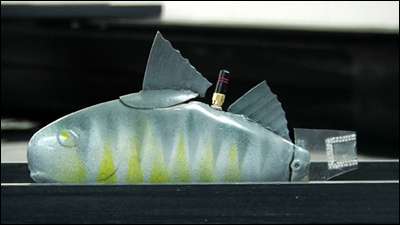September 21, 2011 weblog
Robotic fish test the waters for safety risks

(PhysOrg.com) -- Scientists at Michigan State University are designing and studying robotic fish to be made to swim in schools in order to monitor environmental signs such as accumulations of algae and oil spills. Through the use of sensors and wireless capabilities, the fish can travel in water to collect information. But why go to all that trouble to simulate real fish if other underwater devices can be deployed for the same purpose?
Researchers working with fish robotics say that fish are worthy of simulation as they behave in ways that underwater devices cannot match. Fish are remarkably energy efficient. They have superior agility and speed when changing direction and maneuvering.
What's more, robotic fish can be told their destination and they can guide themselves from that point on, unlike remotely operated devices that need continuous commands: Speed up, go right, go left.
The robotic fish under development at MSU were demonstrated at a recent three-day BEACON event. BEACON is a National Science Foundation-funded center for the study of evolution, headquartered at Michigan State University with partner institutions at the University of Texas at Austin, the University of Washington, North Carolina A&T State University, and the University of Idaho. Viewers watched as a robotic fish swam in an aquarium at MSU.
The fish fins are made of electroactive polymers that move in response to electricity. The polymers change in size or shape when stimulated by an electric field. The fish materials serve as artificial muscles. In binding strips of artificial muscle together in sheets, the fish get their flexible artificial fins that twist, curl, and bend.
Xiaobo Tan, an assistant professor of electrical and computer engineering, believes robotic fish hold much promise in environmetal research. With funding from the National Science Foundation, Tan’s team is working to make autonomous robofish that can swim in schools and navigate around obstacles with minimal, if any, human intervention.
Robotic fish have the potential to amass valuable detailed information for researchers as they learn more about what is happening to land and water environments as a result of climate change and other forces affecting ecosystems.
A fleet of robotic fish, for example, is capable of monitoring oxygen levels, salinity, or data relevant to public safety.
The team's future projects include a design of fish that can swim deep underwater and against strong currents. “We’ve already tested surface-swimming fish in lakes," said Tan. Their work ahead is how to develop fish that can dive and ascend.
The researchers hope to send their robotic fish off to the Gulf of Mexico next year, according to Scientific American.
© 2011 PhysOrg.com




















